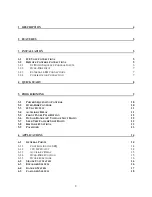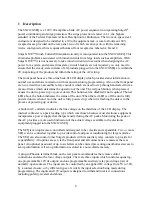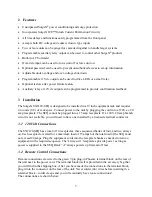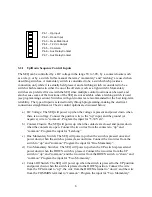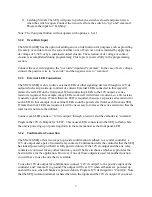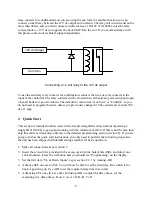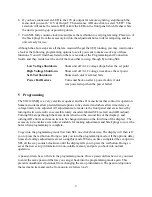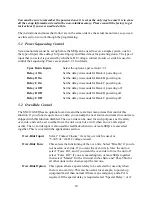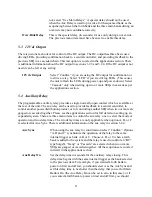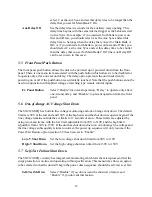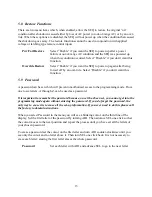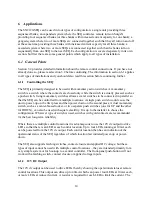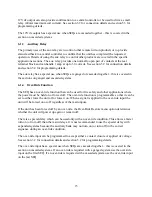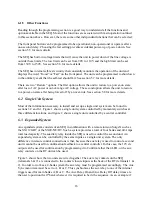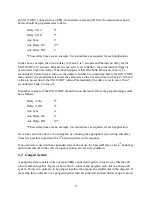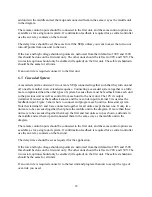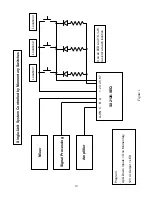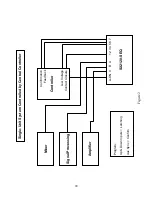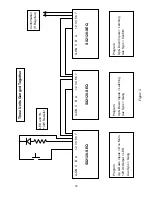
7
f)
Latching Switch: The SEQ will power up when the switch is closed and power down
when the switch is open. Connect the two wires from the switch to “up” and “common”.
Program the input for “Latching”.
Note: The front panel button will not operate with options a, b or f
3.2.2
Over-Ride Input
The SX2120-SEQ has the option of adding an over-ride function for purposes such as providing
fire safety over-ride to force the system either on or off. An over-ride is initiated by applying a
dc voltage of 5-30V or by a sustained contact closure. The selection of dc voltage or contact
closure is accomplished during programming. This topic is covered fully in the programming
section.
Connect the over-ride signal to the “over-ride” input and “common”. In the case of a dc voltage,
connect the positive wire to “over-ride” and the negative wire to “common”.
3.2.3
External LED Connections
The SX2120-SEQ is able to drive external LEDs or other signaling devices through its 12V dc
output which can provide up to 40mA of current. External LEDs connected in this way will
mimic the red LED on the front panel. When connecting LEDs to the 12V output, a series
resistor is required. For example, many LEDs work well with 10mA of current, so a 1K resistor
is usually a good choice. If more than one LED is required, then use a separate series resistor for
each LED. In this example, four external LEDs could be powered at 10mA each from one SEQ.
If more than four LEDs are required, it will be necessary to increase the series resistor so that the
total load is not more than 40mA.
Connect each LED anode to “12V dc output” through a resistor, and the cathodes to “common”.
Program the 12V dc Output for “LED”. This causes LEDs connected to the SEQ to flash while
the unit is powering up or powering down in the same manner as the front panel LED.
3.2.4
Confirmation Connection
The SX2120-SEQ offers two ways to provide confirmation feedback to a central controller: a
12V dc output and a pair of isolated relay contacts. Confirmation tells the controller that the SEQ
has indeed powered up or that it is fully powered down. If the 12V dc output and the aux relay
contacts are not used for any other function, you will be free to choose whichever provides the
best interface for the application. However, if one of these outputs is used for another function
you will have to use the one that is available.
To use the 12V dc output for confirmation, connect “12V dc output” to the positive input of the
controller and “common” to ground. The output will be at 12V when all banks are powered up
and will be zero when all banks are powered down. Program 12V dc Output for “Confirm”. Note
that the SEQ common terminal is shared between the inputs and the 12V dc output. If you need


